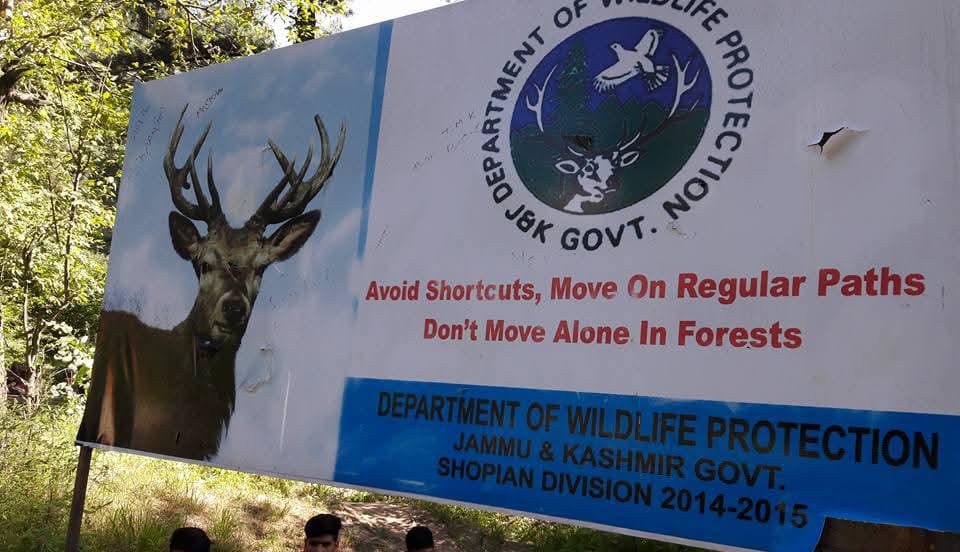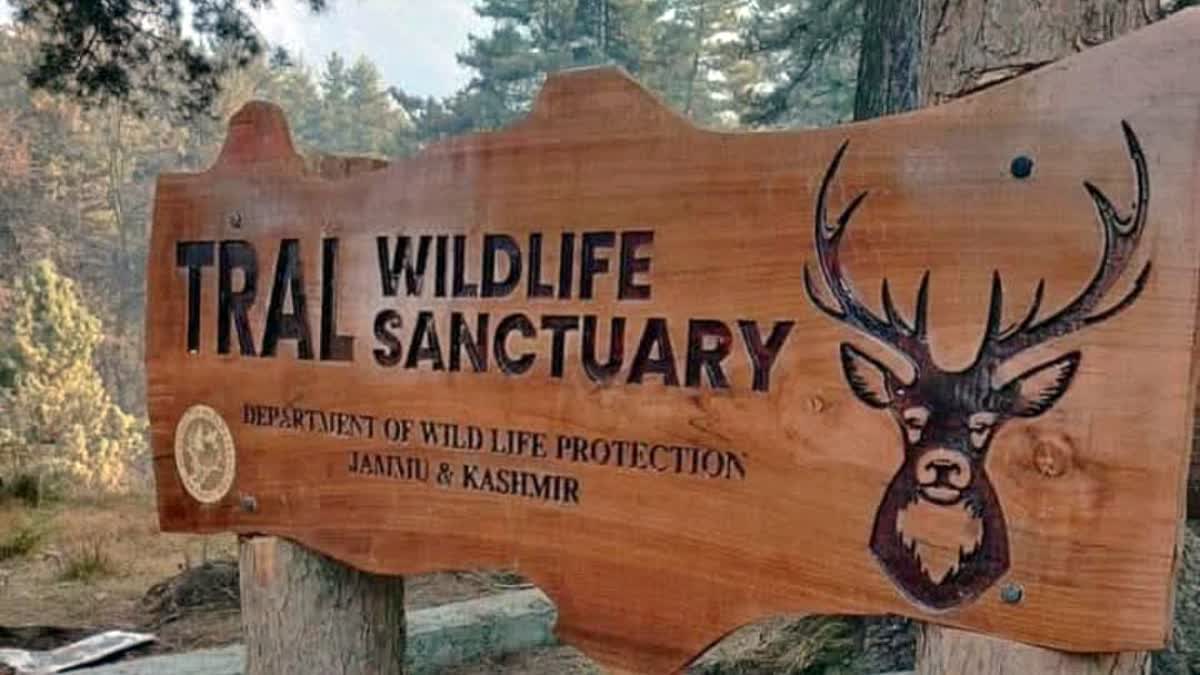Srinagar: The central government has declared 26 villages in Pulwama and Anantnag districts in the Kashmir valley as Eco-Sensitive Zones (ESZs) for the protection and conservation of the endangered Hangul stag in Tral Wildlife Sanctuary. This declaration includes a complete ban on the construction of major industrial units and infrastructure projects in these villages.
For the protection and conservation of Hangul, the forest department has previously implemented several measures, and the declaration of ESZs is a significant step towards safeguarding this endangered species.
As per the notification issued by the Ministry of Environment, Forest and Climate Change on October 3, 2023 (S.O 4325), the central government declared these 26 villages as Eco-Sensitive Zones (ESZs) under the Environment (Protection) Rules, 1986.
These 26 villages, constituting an area of 127.10 square kilometers, are notified as Eco-Sensitive Zones by the Central Government under the Environment (Protection) Act, 1986 (29 of 1986). They extend from zero to 3.26 kilometres from the boundary of the sanctuary.
The 26 villages include; Nagander, Sethpokhran, Wahabkharun villages of the Khrew area in Pampore tehsil, Wagad, Basantpur, Dharamgund, Aripal, Khandgund, Satura, Gutura, Narastan, Manchihama, Kahlil, Chhanakitar, Chewa Ullar, Bathnoor, Mondura, Pannyer, Pinglish, Laribal, Shikargarh, Saimooh, Buchoo of Tral tehsil in Pulwama district, and Sangnar, Pannad, Sakhras of Anantnag district.

Historically notified in 1945 as Conservation Reserves by the Dogra Maharaja, both Shikargah and Khangud were upgraded to Tral Wildlife Sanctuary in 2019. The sanctuary, spread over the rugged and undulating terrain of the Greater Himalayan Mountains, encompasses an area of around 155 square kilometers and came into existence through State Government Notification No. FST/WL/07/2018 (SRO-639), dated 23rd October 2019.
“The Tral Wildlife Sanctuary forms an important corridor for the movement of Hangul. The declaration of the eco-sensitive zone shall help in creating a buffer around the sanctuary area, leading to a secure, suitable, and viable habitat for the last remnant Hangul population,” a senior wildlife official told ETV Bharat.
The Sanctuary is among the few areas outside Dachigam National Park where a population of the critically endangered stag still survives. Besides Dachigam, the sanctuary is connected with other important wildlife areas, such as Overa-Aru Wildlife Sanctuary and Khrew Conservation Reserve.
The official said these protected areas together form a landscape of rich biodiversity and support good populations of some important and endemic species of animals, birds, and vegetation.
The central government has asked the Union Territory Government to prepare a Zonal Master Plan within two years from the date of publication of the notification in the Official Gazette, in consultation with locals.
An official of the Forest Department told ETV Bharat that they have begun work on preparing the Master Plan for the ESZ, and consultations with concerned departments are underway.
The Master Plan, aimed to “integrate ecological and environmental considerations,” is being prepared in consultation with 12 government departments, including Environment, Forests, Agriculture, Revenue, Urban Development, Tourism, Rural Development, Irrigation & Flood Control, Pollution Control Board, Municipality, Panchayati Raj, and Public Works Department.
As per the Master Plan, there will be a complete ban on the construction of industries and commercial units like cement factories, brick kilns, hotels, hydro-projects, wood-based industries, mining and quarrying, and the establishment of large or commercial-scale livestock and poultry farms that cause pollution and negatively impact the environment and risk Hangul and other wildlife.
The Zonal Master Plan shall factor in the improvement of all infrastructure and activities to be more efficient and eco-friendly. It will demarcate all existing worshipping places, villages, and urban settlements, types and kinds of forests, agricultural areas, fertile lands, green areas such as parks, horticultural areas, orchards, lakes, and other water bodies with supporting maps giving details of existing and proposed land use features.
The plan, once approved, shall serve as the reference document for the Monitoring Committee to keep a tab in accordance with the provisions of this notification.
The monitoring committee shall comprise the district development commissioner, Pulwama, the Regional Officer, Jammu and Kashmir Pollution Control Committee, the Divisional Forest Officer (DFO) Awantipora, the Wildlife Warden, Shopian division, a representative of an NGO working in the sector, and an environmental expert.
Read more:



